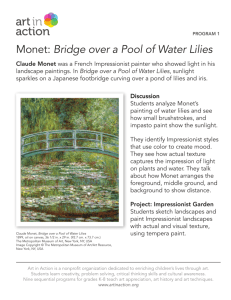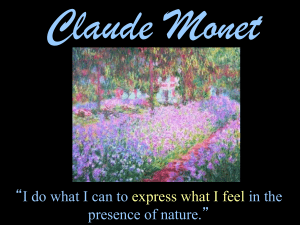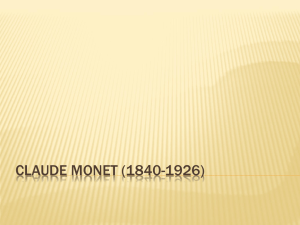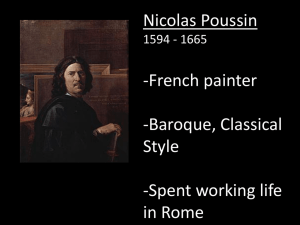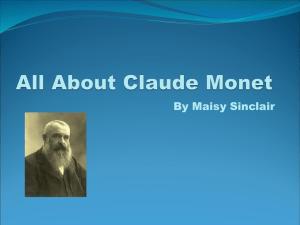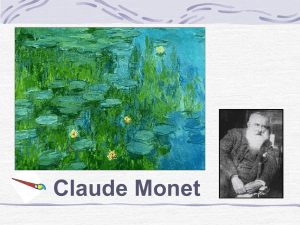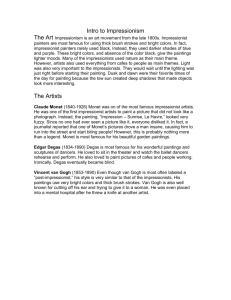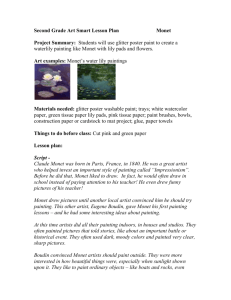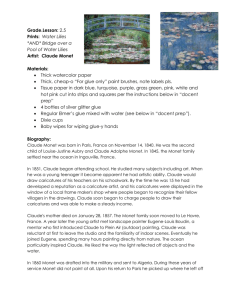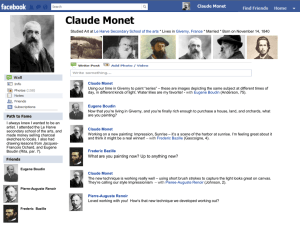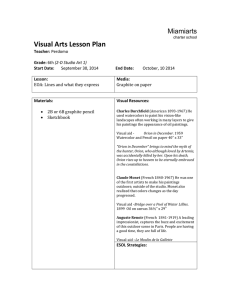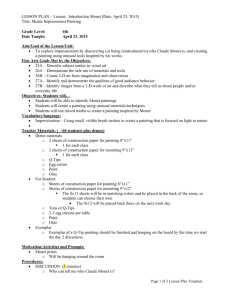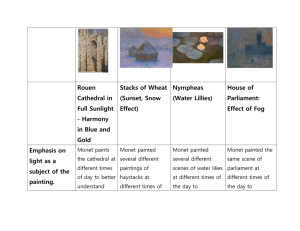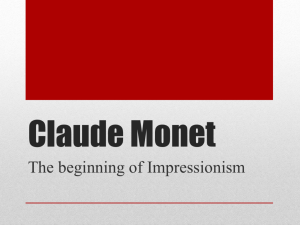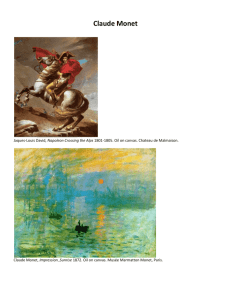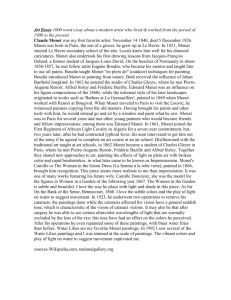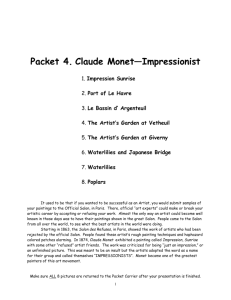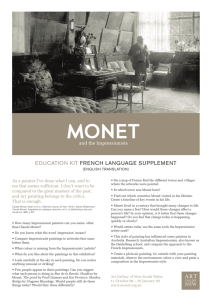Claude Monet
advertisement
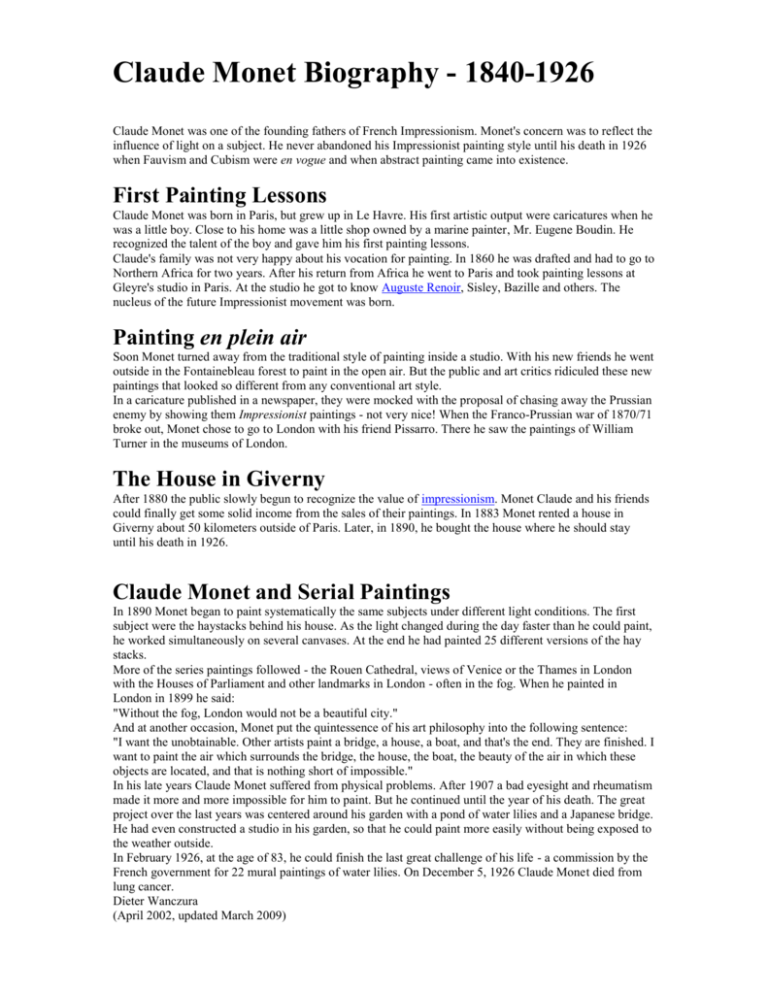
Claude Monet Biography - 1840-1926 Claude Monet was one of the founding fathers of French Impressionism. Monet's concern was to reflect the influence of light on a subject. He never abandoned his Impressionist painting style until his death in 1926 when Fauvism and Cubism were en vogue and when abstract painting came into existence. First Painting Lessons Claude Monet was born in Paris, but grew up in Le Havre. His first artistic output were caricatures when he was a little boy. Close to his home was a little shop owned by a marine painter, Mr. Eugene Boudin. He recognized the talent of the boy and gave him his first painting lessons. Claude's family was not very happy about his vocation for painting. In 1860 he was drafted and had to go to Northern Africa for two years. After his return from Africa he went to Paris and took painting lessons at Gleyre's studio in Paris. At the studio he got to know Auguste Renoir, Sisley, Bazille and others. The nucleus of the future Impressionist movement was born. Painting en plein air Soon Monet turned away from the traditional style of painting inside a studio. With his new friends he went outside in the Fontainebleau forest to paint in the open air. But the public and art critics ridiculed these new paintings that looked so different from any conventional art style. In a caricature published in a newspaper, they were mocked with the proposal of chasing away the Prussian enemy by showing them Impressionist paintings - not very nice! When the Franco-Prussian war of 1870/71 broke out, Monet chose to go to London with his friend Pissarro. There he saw the paintings of William Turner in the museums of London. The House in Giverny After 1880 the public slowly begun to recognize the value of impressionism. Monet Claude and his friends could finally get some solid income from the sales of their paintings. In 1883 Monet rented a house in Giverny about 50 kilometers outside of Paris. Later, in 1890, he bought the house where he should stay until his death in 1926. Claude Monet and Serial Paintings In 1890 Monet began to paint systematically the same subjects under different light conditions. The first subject were the haystacks behind his house. As the light changed during the day faster than he could paint, he worked simultaneously on several canvases. At the end he had painted 25 different versions of the hay stacks. More of the series paintings followed - the Rouen Cathedral, views of Venice or the Thames in London with the Houses of Parliament and other landmarks in London - often in the fog. When he painted in London in 1899 he said: "Without the fog, London would not be a beautiful city." And at another occasion, Monet put the quintessence of his art philosophy into the following sentence: "I want the unobtainable. Other artists paint a bridge, a house, a boat, and that's the end. They are finished. I want to paint the air which surrounds the bridge, the house, the boat, the beauty of the air in which these objects are located, and that is nothing short of impossible." In his late years Claude Monet suffered from physical problems. After 1907 a bad eyesight and rheumatism made it more and more impossible for him to paint. But he continued until the year of his death. The great project over the last years was centered around his garden with a pond of water lilies and a Japanese bridge. He had even constructed a studio in his garden, so that he could paint more easily without being exposed to the weather outside. In February 1926, at the age of 83, he could finish the last great challenge of his life - a commission by the French government for 22 mural paintings of water lilies. On December 5, 1926 Claude Monet died from lung cancer. Dieter Wanczura (April 2002, updated March 2009)

